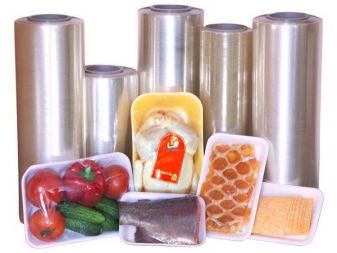What is a polyethylene sleeve and where is it used?

All people need to know what a polyethylene sleeve is, and what is the characteristic of a LDPE half-sleeve for packaging. Knowledge of the characteristics of food grade and black technical films also plays an important role. A separate topic is where film material is used with a width of 12 cm, 500 mm and other sizes.

Peculiarities
A polyethylene sleeve, also known as a sleeve film, is a long polymeric structure sealed on both sides. It is used not only in its pure form, but also as a blank for the formation of special packages. In most cases, the sleeves are of standardized sizes. This is due to the use of carefully tuned production lines. The parameters are adjusted according to the practical purpose of a particular product.
The main qualities of the finished product are prescribed in GOST 10354-82. According to the standard, the plastic film must be extruded. The width of the produced material is normalized depending on the brand. Food products must also comply with the provisions of sanitary standards.
The use for food needs of a film not specified in GOST 16337 is supposed to be coordinated with the medical supervision authorities.


In any case, the normal technology implies the use in the production of granules with given quantitative parameters. Often, special components are used, especially plasticizing and modifying agents. Such additives can guarantee increased tensile strength. Additional manipulations are carried out by special order. The release of one-piece sleeves means that sleeve length is not standardized.
Important features of the material are:
- resistance to most substances found in everyday life;
- increased elasticity;
- almost zero permeability to water and steam;
- air tightness;
- transparency of a number of samples;
- rather high dielectric parameters;
- long period of operation;
- fusibility;
- susceptibility to ultraviolet light;
- unreliability at low temperatures.

Varieties
The packaging polyethylene sleeve is divided into two main types - LDPE and HDPE, that is, made of high and low pressure material, respectively. High pressure treatment allows for flexibility, weightlessness and elasticity. The surface of the material will shine. The toxicity of LDPE is zero, which makes the material valuable for the food industry. But HDPE is used mainly for technical needs.
It is a solid and fairly durable product. It is little affected by acids and alkalis.
In terms of electrical insulating properties, HDPE also stands out favorably. In addition, it is worth pointing out that the film can consist of one or many layers. Additional additives include:
- canvas of the usual type (not containing additives);
- light stabilized material (most often black, but this is not necessary);
- hydrophilic construction;
- a substance with the introduction of antistatic agents (such a canvas clogs up less than usual).


The sleeve can be black, black and white and colored. Additional gradation includes the following products:
- foamed sleeve;
- reinforced;
- heat shrinkable;
- stretch types;
- the sleeve itself;
- half-sleeve (with one-sided cut).


Dimensions (edit)
In most cases, the thickness of the polyethylene film is 20-200 microns. Most often, the sleeve has a width of 1.5 m with a turn of 3 m in a winding of 100 running meters. m.Also, the width can be 10 cm, 12 cm. There are also polyethylene sleeves:
- width 200 mm;
- 50 mm wide;
- width 150 mm;
- 2 m wide.

Scope of application
Of course, most often, tubular polyethylene film is used for packaging food products. The heat-resistant version can also be used for baking, frying. Even building materials and furniture are packed in sleeves. Large items are packed by hand. Small items are often put into sleeves using professional machines.
Similar products are still in use:
- as a covering material for greenhouse and horticultural facilities;
- in packing bulk materials;
- as an insulator of electrical appliances from humidification;
- for germinating seedlings (as a substitute for plastic cups).



For a polyethylene sleeve, see the video.













The comment was sent successfully.